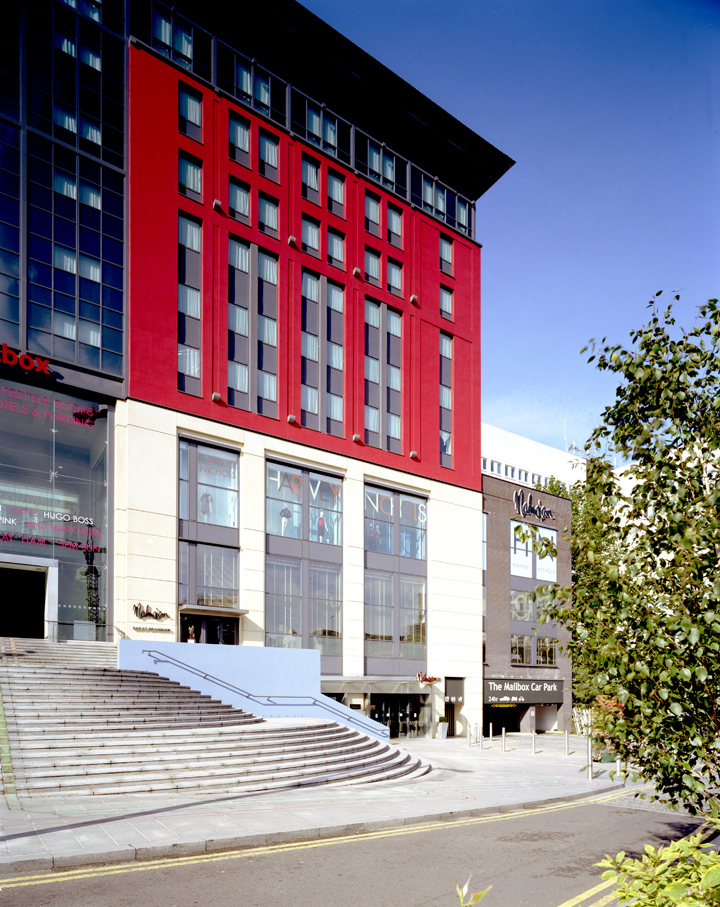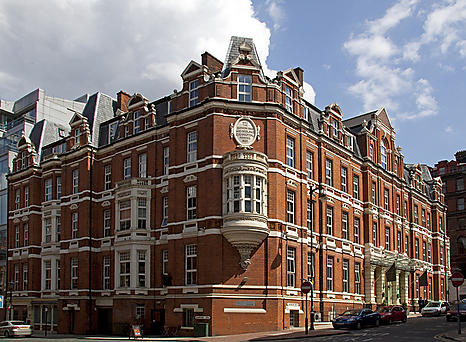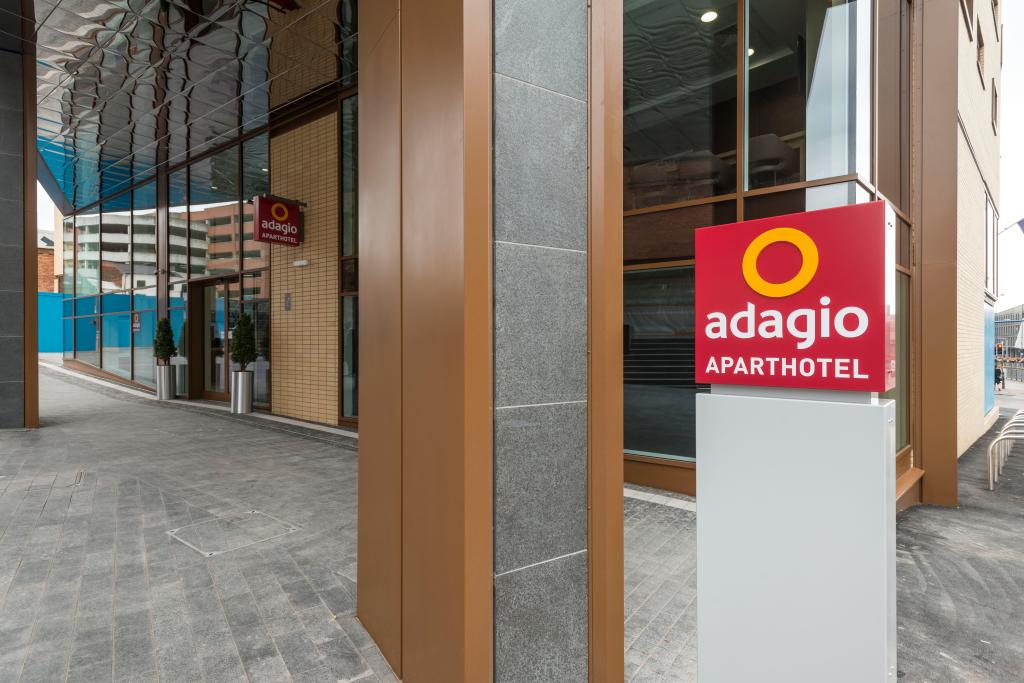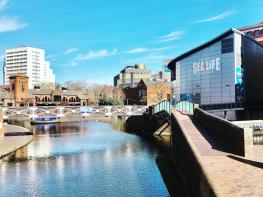The 'Mailbox' development, of which this stylish and contemporary hotel is a part, incorporates…
Around Woodgate Valley Country Park

3.5 miles (5.7kms)
About the walk
Birmingham is surrounded by country parks, which act as the lungs of the city. Woodgate Valley Country Park is one of these vital green spaces and this walk takes you past an urban farm complex and along the side of the babbling Bourn Brook, which runs the length of the valley to the River Rea at Cannon Hill Park.
Woodgate Valley Country Park
The park comprises some 450 acres (182ha) of meadows, hedgerows and woodland on the western edge of Birmingham. It was originally a mixture of farms and smallholdings and every effort has been made to retain its rural appeal. Threatened by development, it was designated a Country Park in 1984. A programme of hedge and tree replanting has taken place, and the visitor centre opened in 1987.
The woodland, ponds and meadows have now become home to a vast range of wildlife and hundreds of species of plants and flowers. The meadowlands near the start of this walk, known as Pinewoods, are a treat to stroll through on a warm summer's day. Pheasants, kingfishers, cuckoos, chiffchaffs, whitethroats and willow warblers are regular visitors, and if you're lucky you may see a long-eared owl or even a marsh harrier. When the plants are in flower, butterflies arrive in large numbers and some 20 species have been seen during a normal summer. Look out especially for the red admiral and the small tortoiseshell.
During 2001, the foot and mouth epidemic resulted in the closure of many footpaths in the Midlands countryside and Woodgate Valley Park became a refuge for walkers and ramblers from outlying areas. Although it is close to so many urban roads, you can still enjoy peace and tranquillity away from the noise of traffic. Houses surround it, yet very few can be seen when you are walking the footpaths along the side of Bourn Brook.
Underground canal
Beneath the parkland are the remains of part of the Lapal Tunnel on the Dudley No. 2 Canal, which connected Halesowen with Selly Oak. It is one of the longest canal tunnels in England and a reminder that the industrial side of Birmingham is never too far away, even if you can't actually see it.
The canal was built in 1790 despite fierce local opposition as industrial expansion in the West Midlands was proceeding at a frightening pace. Measuring only 9ft (2.7m) wide and 9ft (2.7m) from water level to ceiling, it gradually fell into disuse with competition from the railways. Following mining subsidence in 1917, the tunnel was closed and finally sealed off in 1926, though there is an active campaign to reopen it sometime in the future.
Walk directions
From the bottom of the visitor centre car park, turn left on the main road, and then right on the pavement, down the hill for 100yds (93m), bearing right at the roundabout. Turn right along Woodgate Lane for 20yds (18m), then right again down Watery Lane, signposted to Bourn Brook, Harbourne and Selly Oak.
When you reach the farm access gate, bear left along the tarmac footpath by the side of a stream – the Bourn Brook – with the bridleway up to the left. This path arcs right, passing two footbridges over the brook. At the second footbridge, do not cross it but bear left past the large oak tree and a bench seat and walk along a footpath that arcs away from the stream towards an area of young trees. In about 100yds (93m), bear right and in a few more paces right again, beyond a white-tipped marker post. The path dips back into the woods briefly before emerging in an open area. Follow the grassy ride down the left-hand side of the clearing. At a junction of paths, by a bench, take the right-hand option, crossing the meadow.
Another footpath comes in from the left, and you then reach another junction of footpaths at which you continue ahead. Soon another path merges from the left and you bear right towards a rather high footbridge over the stream. Do not cross it; instead bear left and follow the footpath on the left side of Bourn Brook. This leads into the trees and there follows a very pleasant stroll through the park, always close to the bank of the stream (ignore a subsequent footbridge).
All too soon you will hear the noise of traffic on the B4121 ahead. Just before you reach the road, go right over the footbridge and follow the footpath down the other side of the stream. The path passes close to housing, but this is barely visible and the country feel is maintained until you reach the high footbridge once again.
Do not go over the footbridge, but leave the Bourn Brook behind and bear half left to take a grassy footpath that crosses open land diagonally with houses to your left (do not go left towards the houses). Through a tree belt maintain your direction over a second open area, diverging away from the houses. At the end, cross the footbridge in the far corner and bear right to follow the path near the field-edge, firstly in woods, then passing by a football pitch to arrive back at the visitor centre.
Additional information
Grassy footpaths and tracks
Country park
Off lead around park
OS Explorers 219 Wolverhampton & Dudley; 220 Birmingham
Woodgate Valley Country Park
Country Park visitor centre building
WALKING IN SAFETY
Read our tips to look after yourself and the environment when following this walk.
Find out more
Also in the area
About the area
Discover West Midlands
After Greater London, the West Midlands is the UK’s biggest county by population, and after London, Birmingham is the UK’s largest city. There’s a lot to seek out here – it has a vibrant culture, with exceptionally good nightlife. Coventry used to be more important than Birmingham, until the 18th century when the Industrial Revolution started and Brum forged ahead.
Apart from Lady Godiva, Coventry is best known for its cathedrals. The medieval parish church became a cathedral in 1918, but the Blitz on Coventry in 1940 left only the spire and part of the walls. After the war, it was decided to build a new cathedral alongside linked to the ruins.
Dudley was one of the birthplaces of the Industrial Revolution, and this history is reflected in its architecture and the Black Country Living Museum, a recreation of an industrial village, with shops and a pub, cottages and a chapel. Stourbridge is also worth a visit, mainly due to its involvement in glassmaking, which has been going on since the 17th century, and is still a part of the town’s culture; there’s a glass museum and a bi-annual glass festival.
Nearby stays
Restaurants and Pubs
Nearby experiences
Recommended things to do
Why choose Rated Trips?
Your trusted guide to rated places across the UK
The best coverage
Discover more than 15,000 professionally rated places to stay, eat and visit from across the UK and Ireland.
Quality assured
Choose a place to stay safe in the knowledge that it has been expertly assessed by trained assessors.
Plan your next trip
Search by location or the type of place you're visiting to find your next ideal holiday experience.
Travel inspiration
Read our articles, city guides and recommended things to do for inspiration. We're here to help you explore the UK.













